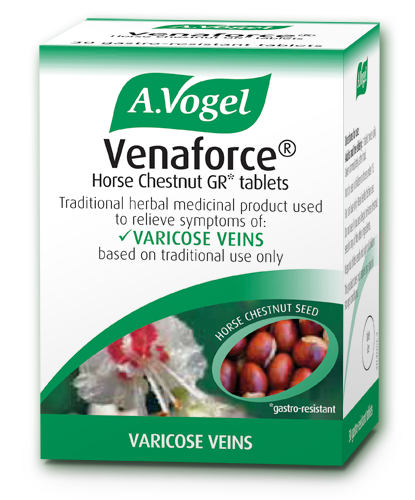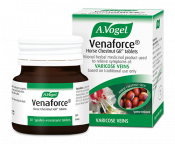What is DVT, and why do people with varicose veins worry about it?
One of the most often talked about risks associated with flying is Deep Vein Thrombosis (DVT). Since DVT and varicose veins both affect veins and poor circulation, people often worry that their varicose veins may increase their chances of developing DVT whle flying.
Deep Vein Thrombosis is a very different condition to varicose veins. Varicose veins are damaged surface veins, and any clots that occur here will be small and unlikely to present a risk to your health. DVT, however, is a condition where a bigger clot or clots develop in the deep veins of the legs. This becomes particularly dangerous if the clot begins to move, especially if towards the lungs as this can block the blood vessels in the lungs and cause a Pulmonary Embolism, a potentially life-threatening condition.
Symptoms of DVT are:
- Pain and swelling in one leg, foot or ankle,
- Cramping in the leg,
- A heavy ache in the leg,
- Warm skin around the area of the clot,
- Red skin, particularly on the back of your leg.
It is well known that flying, in particular long haul flights of over 4 hours, can increase the risk of developing DVT, due to inactivity, low cabin pressure and low oxygen. This causes blood to flow more slowly, which increases the chance of clotting.

Is there a link between varicose veins, DVT and flying?
It is important to remember that flying, especially long haul, is never 100% safe as there is always a slight risk of developing DVT. There are, however, a number of factors that increase the risk of developing DVT, and unfortunately one of these factors may be varicose veins.
There is plenty of research into the link between varicose veins, DVT and air travel, but much of it is contradictory. On the whole, it appears that a person suffering from varicose veins does have a slightly increased chance of developing DVT. One study suggested that varicose veins increased the chance of developing DVT from 0.9% to 5.6%. It is unclear whether it is the varicose veins themselves that cause this increase in risk, or if people who are susceptible to varicose veins are simply also susceptible to DVT.
However, the level of this risk is usually ranked alongside pregnancy and oral contraceptives, suggesting that it is considered no more dangerous than these factors.
While having varicose veins may increase your risk of developing DVT, the chances of it developing are still very low, particularly if you take measures throughout the flight to reduce this risk. Some self-help techniques are detailed later in this blog post.
The best thing to do if you are concerned is to consult your doctor, who will be able to check your health and medical history to determine if you are safe to fly.
Flying after varicose vein surgery
The development of DVT is a possibility after surgery of any kind and, in fact, the risk of developing DVT as a result of varicose veins surgery is significantly lower than that of other surgeries such as knee replacement or abdominal operations. The chances of developing DVT as a result of vein surgery is estimated at 1 in 1000.
Generally, doctors recommend waiting four weeks after varicose vein surgery before flying, particularly for long haul flights, though some advise only a week or two for short flights.
I recommend consulting your doctor before flying, particularly if you think you are affected by some additional risk factors of DVT, detailed below.

Varicose veins and flying while pregnant
Pregnancy complicates the relationship between varicose veins and DVT somewhat: varicose veins are often an effect of pregnancy, but pregnancy is also another risk factor for developing DVT. As well as this, flying while pregnant can increase the risk of developing varicose veins in the first place.
Flying while pregnant is generally not recommended after 36 weeks, though some airlines may be unwilling to carry passengers who are over 28 weeks pregnant. Provided you have no other complications or health issues, flying before this point is normally fine, though some women prefer not to fly in the early stages of pregnancy due to nausea, exhaustion and the increased risk of miscarriage during these weeks.
Since both pregnancy and varicose veins are risk factors for DVT, if you are pregnant with varicose veins I would advise speaking to your GP before flying, as they will be aware of your general health and medical history, and so can give you a more accurate answer.
Increased risk factors
There are a number of other risk factors besides varicose veins and pregnancy that will increase your risk of developing DVT and so affect how safe it is for you to fly. These risk factors are:
- Having previously suffered DVT or a family history of DVT
- Obesity
- Being aged 40 or over
- Smoking
- Medication containing oestrogen (such as the oral contraceptive or hormone replacement therapy)
- Having recently had an operation.
If you think that you are in one of these risk groups, you may wish to consult your doctor before flying, especially on a long haul flight. They will be able to advise you of any risks, and may prescribe an anticoagulant if necessary to reduce the risk of blood clotting.
What can I do to reduce the risk of DVT?
There are plenty of things you can do to reduce the risk of developing DVT whilst flying, whether you suffer from varicose veins or not. My self-help tips are:
- Keep moving – common recommendations are to bend and straighten your legs, feet and toes for 3-4 minutes every half hour, walk up and down the aisle for 3-4 minutes every hour (if it is safe to do so), wriggle your toes frequently and massage your calves regularly
- Stay hydrated – drink plenty of water and reduce or eliminate your caffeine and alcohol intake
- If you have the means to, try flying in business or first class, as this will give you more room to move your legs
- Wear loose-fitting, comfortable clothing so as not to restrict circulation
- Wear compression socks to encourage circulation in the legs

Herbal remedies for varicose veins
 To treat varicose veins naturally, we recommend an extract of horse chestnut seeds, found in our Venaforce tablets. These tablets should be taken long term to prevent the development of varicose veins or to manage varicose veins symptoms such as tired, heavy legs, cramp, and swelling.
To treat varicose veins naturally, we recommend an extract of horse chestnut seeds, found in our Venaforce tablets. These tablets should be taken long term to prevent the development of varicose veins or to manage varicose veins symptoms such as tired, heavy legs, cramp, and swelling.
You may also want to try Venagel, a gel version of the same extract. This provides cooling relief to tired, heavy and uncomfortable legs.
Venaforce is not suitable for pregnant women, but you can still safely use Venagel.
Originally written on 08/06/2016, updated on 15/11/2018.









